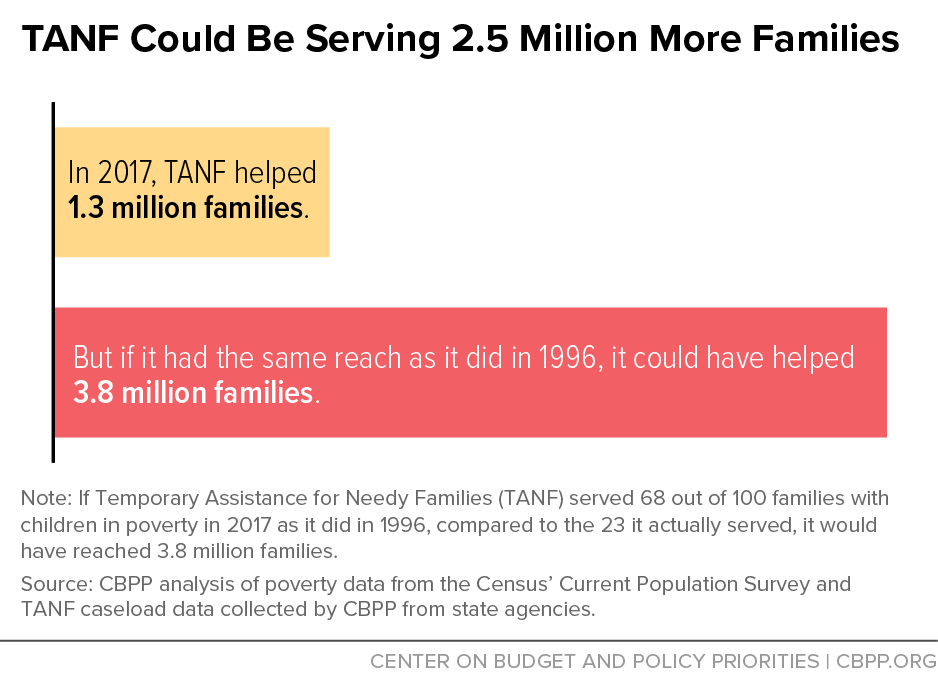BEYOND THE NUMBERS
TANF at 23: Over 2.5 Million More Families Could Be Getting Cash Assistance, Work Supports
In replacing the Aid to Families with Dependent Children (AFDC) program with the Temporary Assistance for Needy Families (TANF) block grant 23 years ago, policymakers promised all families living in poverty a better economic future by providing temporary financial support, along with job preparation and work support. TANF has fallen far short in fulfilling this promise, particularly in states where Black families are likelier to live. It can, and must, do better. Our week-long blog series examines TANF’s role — and its performance — in providing modest but crucial anti-poverty support.
Some 2.5 million more families nationwide would have received TANF’s direct financial assistance in 2017 if TANF had the same reach that it did upon its creation in 1996. Its cash benefits provide critical support for families with very low incomes that could not only help cover parents’ and children’s basic needs today, but also help create stability for these children to thrive in the future. These parents are also missing out on TANF work programs that could connect them to a job. State and federal policymakers need to do more to strengthen TANF and help these parents and their children afford the basics.
TANF’s monthly direct financial assistance helps parents afford necessities such as diapers, personal hygiene items, and winter coats, helping them raise their children with dignity and stability. As we noted last week, having access to a stable income also can improve children’s well-being and long-term outcomes. But few families in poverty receive TANF.
In 2017, for every 100 families with children living in poverty, only 23 families received TANF. That’s about a third of the 68 in 100 families that TANF reached in 1996. Generally, this “TANF-to-poverty ratio” (TPR) has dropped over time because TANF caseloads have fallen more than the number of families living in poverty has. This is partly due to state policy and administrative changes that have made TANF less accessible to families that need it through, for instance, strict eligibility barriers, restrictive work requirements, and time limits for assistance. In addition, TANF state programs couldn’t meet rising need for families after the Great Recession.
If TANF served the same share of families with children living in poverty today as it did in 1996, an estimated 2.5 million more families would receive TANF than those that actually did in 2017. That’s 2.5 million more families that would have received direct financial assistance to help them reach financial stability. (See chart.)
While 16 states in 2017 provided TANF to just 10 or fewer families for every 100 living in poverty, no states had that same low rate in 1996. Louisiana and Texas had the lowest TPRs in 2017, at just 4. If Louisiana had the same TPR in 2017 as in 1996, nearly 70,000 Louisiana families would have received TANF, compared to an actual caseload of only about 6,000 families. Texas would have served over 250,000 families instead of 25,000.
A few states have taken small steps to expand access, but state and federal policymakers need to do more. The President and Congress should create a state access measure, such as the TPR, that measures whether families in need are receiving TANF. That would hold states accountable and encourage them to provide direct financial assistance to all families that are struggling to afford the basics.

